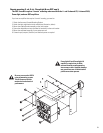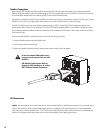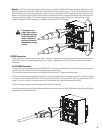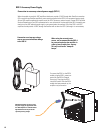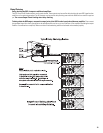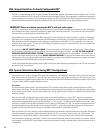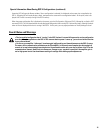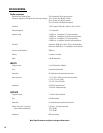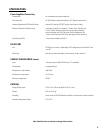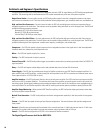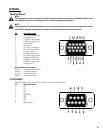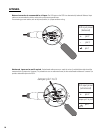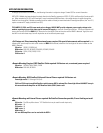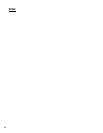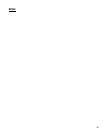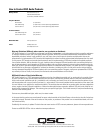
18
Architect’s and Engineer’s Specifications
The Digital Signal Processor (DSP) shall provide two independent channels of DSP for signal delivery to QSC DataPort equipped power
amplifiers. The processing shall be distributed with the DSP module mounted directly to the rear of the power amplifiers.
Output Power Limiter—For each audio channel, the DSP shall provide a power limiter that is assignable anywhere in the signal
chain and can be switched on or off. The limiter shall provide the following adjustments: gain, threshold, attack time, and release time.
High- and Low-Pass Crossovers—For each channel of audio, the DSP will provide high-pass and low-pass crossovers that are
assignable anywhere in the audio chain. The crossovers must be capable of being switched in or out of the signal chain. The DSP shall
provide the following crossover responses:
Butterworth (6,12,18,24 dB per octave slope)
Bessel (6,12,18,24 dB per octave slope)
Linkwitz-Riley (12 & 24 dB per octave slope)
High- and Low-Pass Shelf Filters—For each audio channel, the DSP shall provide high-pass and low-pass shelf filters that are
assignable anywhere in the audio chain. The shelf filters must be capable of being switched in or out of the signal chain. The DSP shall
provide the following shelf filter adjustments: variable corner frequency, variable gain, and variable slope.
Compressor— The DSP shall provide a signal compressor that is assignable anywhere in the signal chain. It shall have adjustable
threshold, attack time, release time, and compression ratio.
Mixer— The DSP shall provide multiple 2-to-1 mixers.
Polarity— The DSP shall provide for polarity reversal.
Contact Closure I/O—The DSP shall provide a trigger input usable for contact-closure (or other) purpose which shall be CMOS & TTL
signal compatible.
Delay— The DSP shall support multiple delays with a total available delay time of at least 910 milliseconds.
Power Supply—The DSP shall be provided power through its DataPort connection to most QSC DataPort equipped amplifiers. For
older amplifiers and non-QSC amplifiers, a coaxial power jack will be provided on the DSP for connection to an external power source.
Power required shall be +15 VDC at 300 mA (max.).
Amplifier Interface—The DSP shall attach directly to the rear of each power amplifier. The DSP’s interface to each power amplifier
shall be via an HD-15 connector (DataPort). This interface shall transmit two amplifier input audio signals as well as all control and
monitoring signals. Special signal conditioning and grounding techniques shall be used in this interface to ensure negligible levels of
noise and crosstalk. For non-DataPort amplifiers, there shall be mounting and interface options provided for operating with the DSP.
Amplifier Output Monitoring—When used with QSC DataPort amplifiers, the DSP shall provide clipping and protect status detec-
tion at the amplifier’s output terminals.
Noise & Tone Generation-- The DSP shall provide pink and white noise generation capability. It shall also provide for tone genera-
tion.
Presets— The DSP shall be capable of storing at least 8 preset configurations. The control software shall provide management of
these presets.
General—All audio inputs and outputs shall be balanced with a nominal input level of +4 dBu and maximum level of +21 dBu. Input
and output Gain controls shall be provided. Input and post-processor output connectors shall be XLR-type.
Control— The DSP shall be configurable via RS-232 or via a networked DataPort connection.
The Digital Signal Processor shall be the QSC DSP-4.



